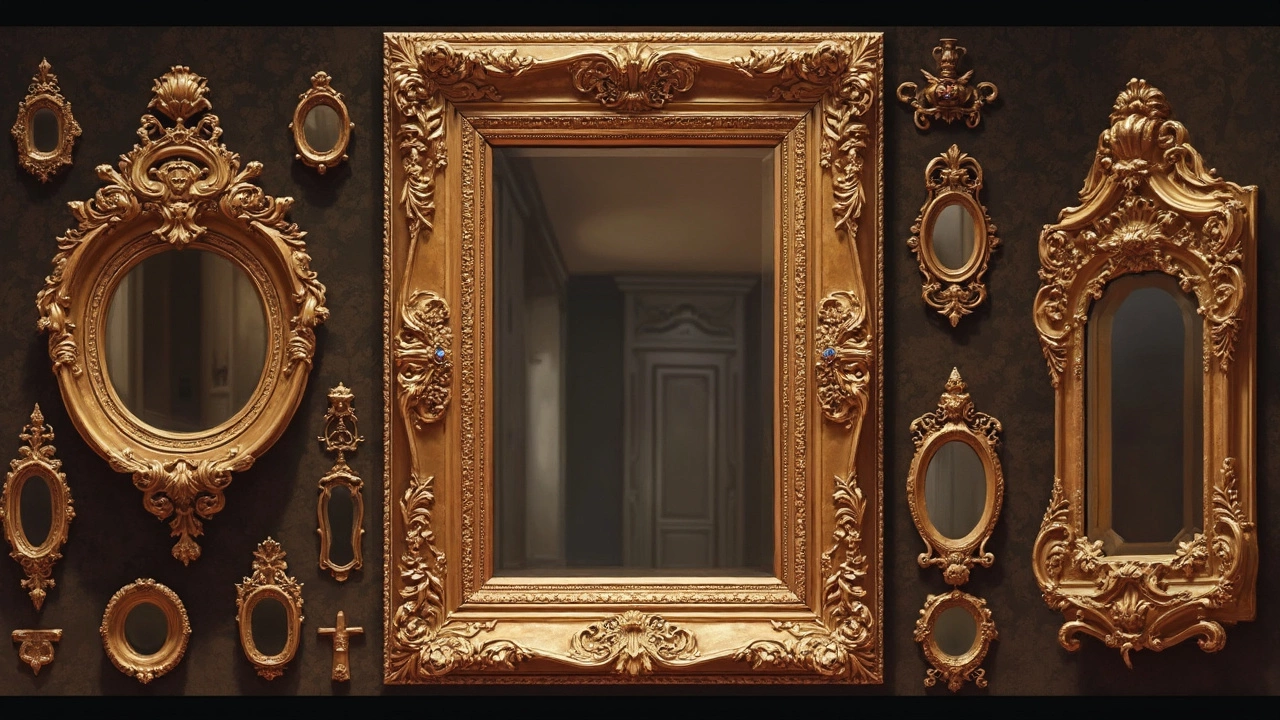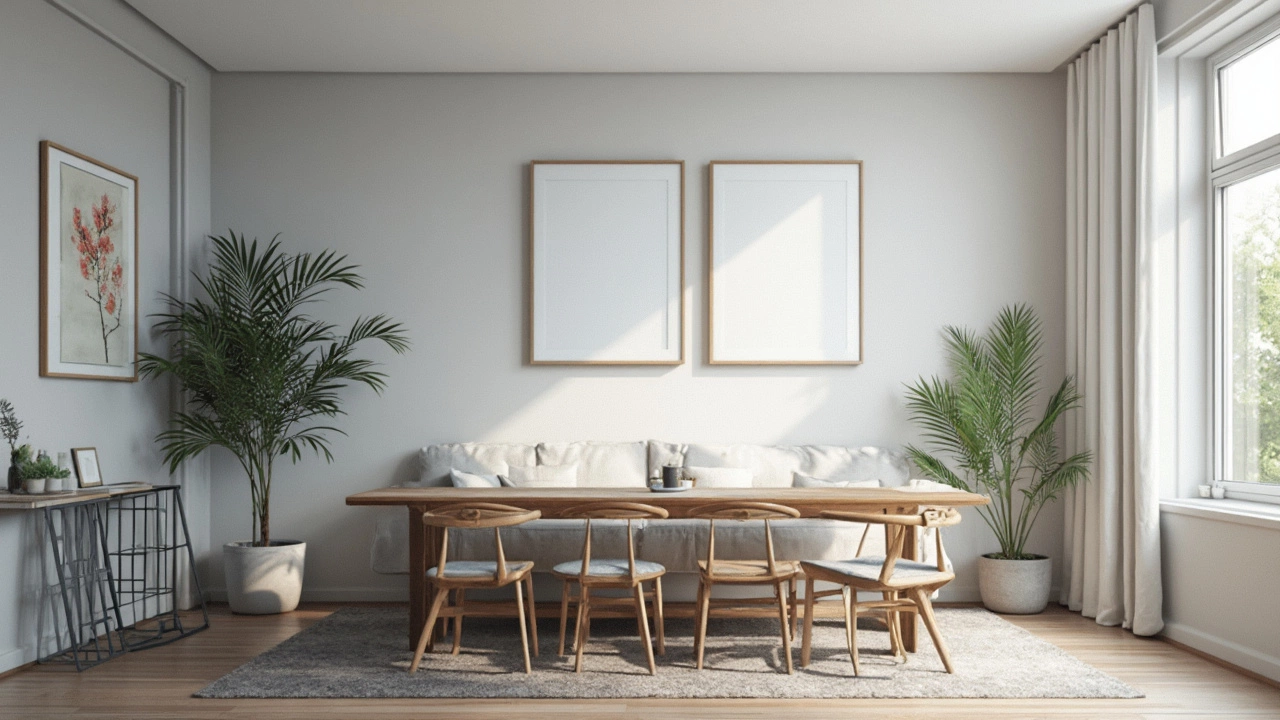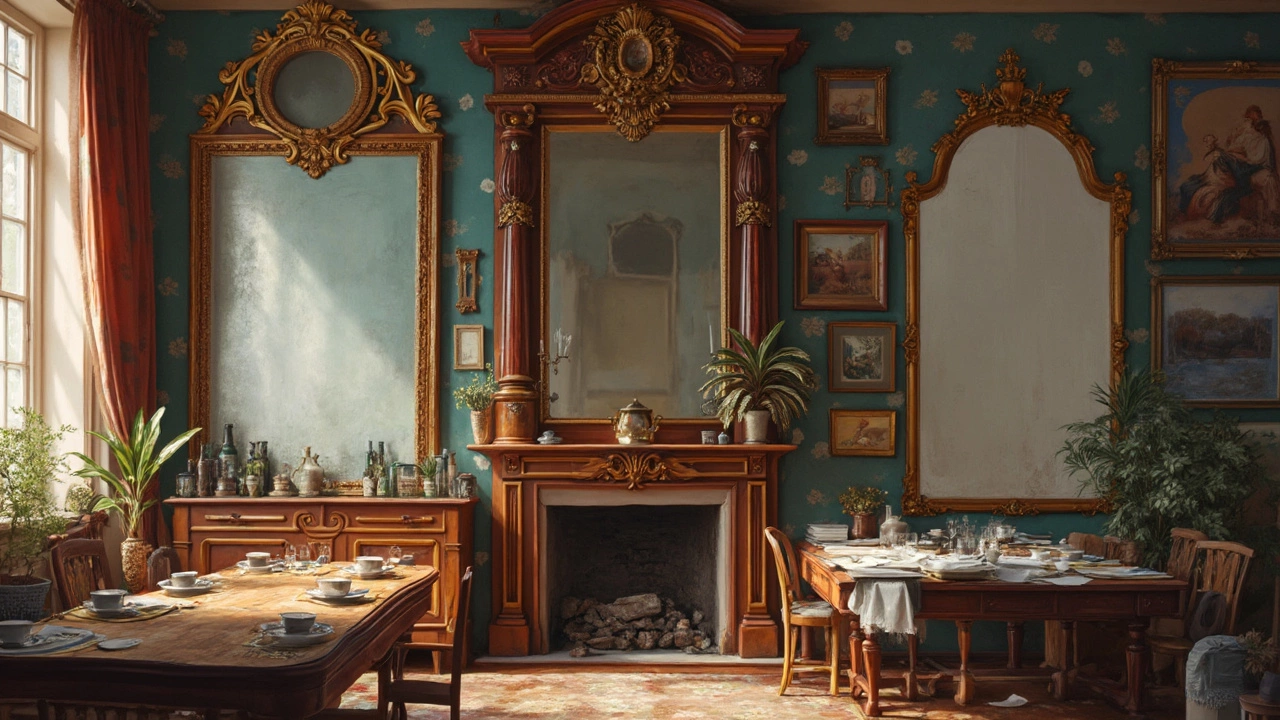Difference Between Cheap and Expensive Mirrors
 Mar, 24 2025
Mar, 24 2025
So you've got your eye on a mirror, but you can't help but notice the vast price difference between the options. Are the costly ones really worth the splurge, or are the cheaper versions just as good? Here's the scoop: it's all about the details.
First up, the materials used to make these mirrors can vary greatly. Expensive mirrors usually use high-quality glass and coatings that provide a clear and undistorted reflection. Cheaper ones might cut corners with thinner glass or subpar reflective coatings, leading to funhouse-style effects. Not quite the look you're aiming for, right?
- Material Matters
- Quality of Reflection
- Design and Craftsmanship
- Durability and Longevity
- Choosing the Right Mirror for Your Space
Material Matters
When it comes to mirrors, the stuff they're made from can make or break your decor. Let's dive into what really matters in the material world of mirrors.
Glass Thickness
First off, look at the glass. Expensive mirrors often use thicker glass, usually at least 1/4 inch thick. This thickness ensures a sturdy feel and less distortion in reflections. Cheaper mirrors might go for a thinner glass, like 1/8 inch, which can more easily warp over time.
Reflective Coatings
The magic of a mirror lies in its reflective coating. High-end mirrors commonly use silvering, a coating of silver nitrate, which produces a cleaner and more accurate reflection. Budget mirrors might rely on aluminum coatings, which are generally duller and prone to wear away faster.
Backing Materials
Backing plays a big role, too. High-quality mirrors often have a solid backing like hardboard or wood, providing durability. Knock-off versions might use flimsy plastic or cardboard backing, which can lead to premature wear and tear.
Finishing Touches
The edges of a mirror can tell you a lot. High-end mirrors might feature bevelled edges, adding an elegant look. Cheaper options usually stick with flat edges, meaning they'll lack the same visual appeal.
The upside? Knowing these differences isn't just about spending more. It's about making informed choices that align with your needs and style. Understanding materials helps you decide whether to go for the splurge or save your pennies for other decor goodies.
Quality of Reflection
The reflection quality of a mirror can either enhance your decor or become an eyesore. While all mirrors might look similar at first glance, the way they reflect light and images can differ dramatically. The main factor here is the thickness and quality of the glass used.
Higher-end mirrors use thicker glass layers and superior reflective coatings, usually silver nitrate or aluminum, which offer clear and precise reflections without distortion. Thinner glass, often found in cheap mirrors, allows light to pass through and reflect unevenly, resulting in distorted images. Have you ever seen a mirror that makes everything look a little warped? Yep, that's often due to glass issues.
Understanding Mirror Coatings
Not all coatings are created equal. High-quality mirrors get their shine and reflection from a silver nitrate coating. Over time, these maintain their quality and don't tarnish easily compared to coatings used in cheap mirrors. Aluminum coatings are another standard option, found in mid-range mirrors. They're good but can sometimes give off a slightly duller reflection compared to silver.
If you're considering a mirror for a critical spot like the bathroom or bedroom, prioritizing reflection quality might save you from frustration in everyday use. Expensive mirrors often promise clarity and a true-to-life reflection.

Design and Craftsmanship
When it comes to mirrors, the design and craftsmanship can really set apart the cheap from the pricey ones. It's like comparing a budget hatchback to a luxury sedan. Let's dive into what makes the difference so striking.
The first thing you notice might be the frame. High-end mirrors often have frames made of solid wood, metal, or other durable materials. They're crafted with precision and come in an array of finishes from brushed nickel to antique gold. Meanwhile, cheaper mirrors tend to use synthetic materials that can look plasticky and are prone to wear.
Attention to detail doesn't stop at just the frames. The way these mirrors are assembled also plays a role. High-priced mirrors are often hand-assembled, ensuring each component fits together just right. This minimizes gaps and misalignments, giving the mirror a sleeker look.
Then there are the embellishments. Expensive mirrors may feature intricate carvings, gilded designs, or inlays that add an artistic touch. These aren’t just for show. Such details reflect a high level of skill and contribute to the mirror's overall beauty and appeal.
If you've ever wondered why two mirrors that look similar at first glance have such a price gap, now you know. It's all about the time, materials, and skill that go into creating a quality piece that not only looks good but also lasts longer.
Choosing Based on Style
Personal style matters too. Are you going for a classic décor, or do you lean toward minimalism? The design and craftsmanship of your mirror should complement your space. While pricey mirrors provide a statement piece with superior quality, you can still find cheap mirrors that offer decent designs, just with fewer bells and whistles.
Durability and Longevity
When wondering about the lifespan of cheap mirrors versus expensive mirrors, the difference often boils down to the craftsmanship and materials used. High-quality mirrors are built to last, offering a clear, consistent reflection over time without warping or tarnishing.
Consider the backing. Expensive mirrors come with superior silver or aluminum backing that's treated to resist oxidation and moisture damage. This keeps them looking new and vibrant for years. With cheap mirrors, you're likely getting a backing that hasn't been treated, which can lead to quicker deterioration, especially in humid environments like bathrooms.
Frame Considerations
The frame can also play a big role in a mirror's longevity. Luxury options tend to use durable wood or metal with finishes that resist chipping, while budget mirrors might use plastic or lesser-quality wood that’s prone to wear and tear.
"A well-constructed mirror can easily outlive its cheaper cousins," says interior designer Jane Randall. "Investing in quality mirrors not only enhances your decor but also ensures it remains part of it for years to come."
Construction and Care
Hold on! Even if a mirror is top-notch quality, it benefits from a bit of TLC. Ensure it’s installed properly, away from excessive moisture if it’s not specifically designed for such settings. Frequent cleaning with appropriate products will help maintain its condition.
When treated right, expensive mirrors can add value and beauty to your home for generations, extending far beyond the typical lifespan of their cheaper counterparts. It's about more than just aesthetics—it's a lasting investment in the ambiance of your space.

Choosing the Right Mirror for Your Space
Picking the perfect mirror is about more than just liking the way it looks. There's strategy involved, and some practical considerations too.
Size and Shape: Start by measuring the space where you want to hang the mirror. A huge mirror in a tiny area might overwhelm, while a small one can look out of place in a large hallway. Shapes matter too; round mirrors can soften spaces, whereas square or rectangular ones might add structure.
Where Will You Put It?
Placement is key! Hang mirrors at eye level for the best effect, or slightly higher if it's a vanity. In bedrooms, they can reflect light, making the space feel larger. But avoid placing a mirror across from your bed—it might be bad feng shui for some folks.
Functionality
Are you using the mirror for decoration, to check your reflection, or both? If it's a bathroom mirror, splurging on a clearer reflection might be worth it. For purely decorative purposes, you can economize on the reflection quality and focus on the frame's design instead.
Style and Theme
Make sure the mirror you choose fits with the rest of your decor. A sleek modern mirror might seem odd in a traditional room. Conversely, an ornate frame can dress up a minimalist space if done right.
Ultimately, balance your budget with practical needs. Even a cheap mirror can elevate a space if chosen thoughtfully. Remember, the best mirror is one that does what you need, looks good doing it, and fits your wallet.